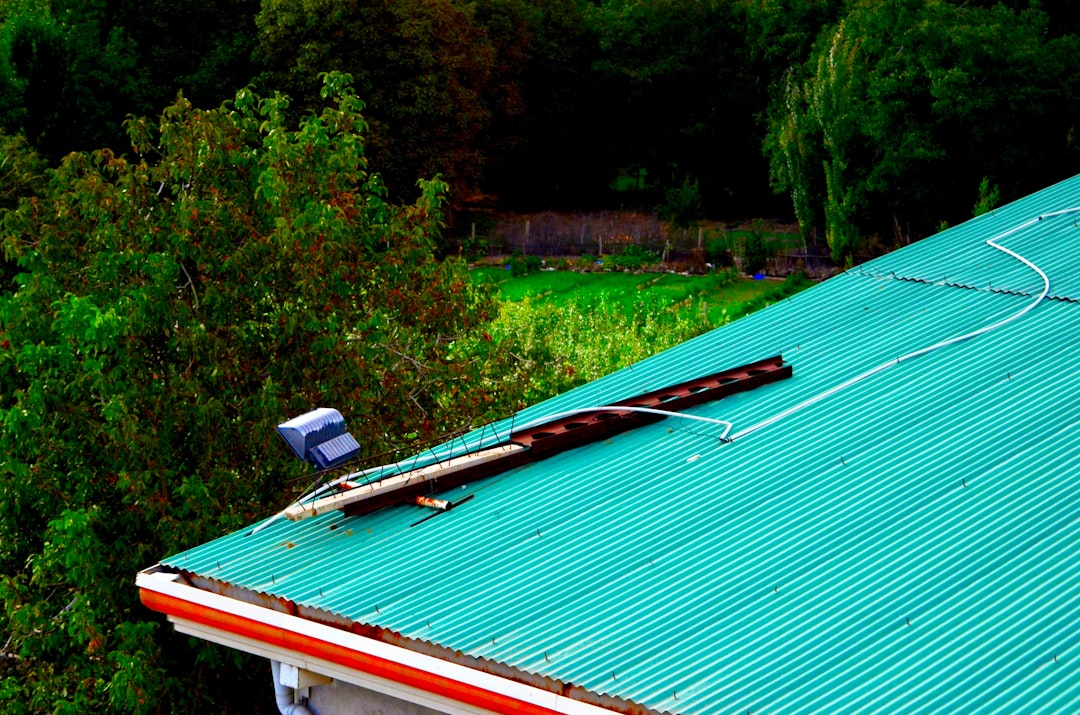
Do You Need a Roof Inspection After a Wind Advisory? The short answer is yes. Wind advisories often mean gusts over 50 mph, which are strong enough to cause significant roof damage that you might not see from the ground.
Quick Assessment Guide:
- Immediate need: If winds exceeded 50+ mph during the advisory
- Visible damage present: Missing shingles, debris, or obvious exterior damage
- No visible damage: Still inspect – hidden damage is common and dangerous
- Insurance consideration: Most policies require prompt reporting within 30-60 days
- Professional inspection: Recommended within 24-48 hours to prevent mold growth
Your roof is your home’s first line of defense against Columbus’s unpredictable weather. Even minor, undetected wind damage can lead to water infiltration, mold growth, and costly structural repairs. Strong winds can lift shingles, crack flashing, or create subtle openings for water without any obvious signs. The longer these issues go unaddressed, the more expensive repairs become.
This guide provides a simple 3-step process to help Columbus-area homeowners safely assess their property after a wind advisory and determine when professional help is needed.
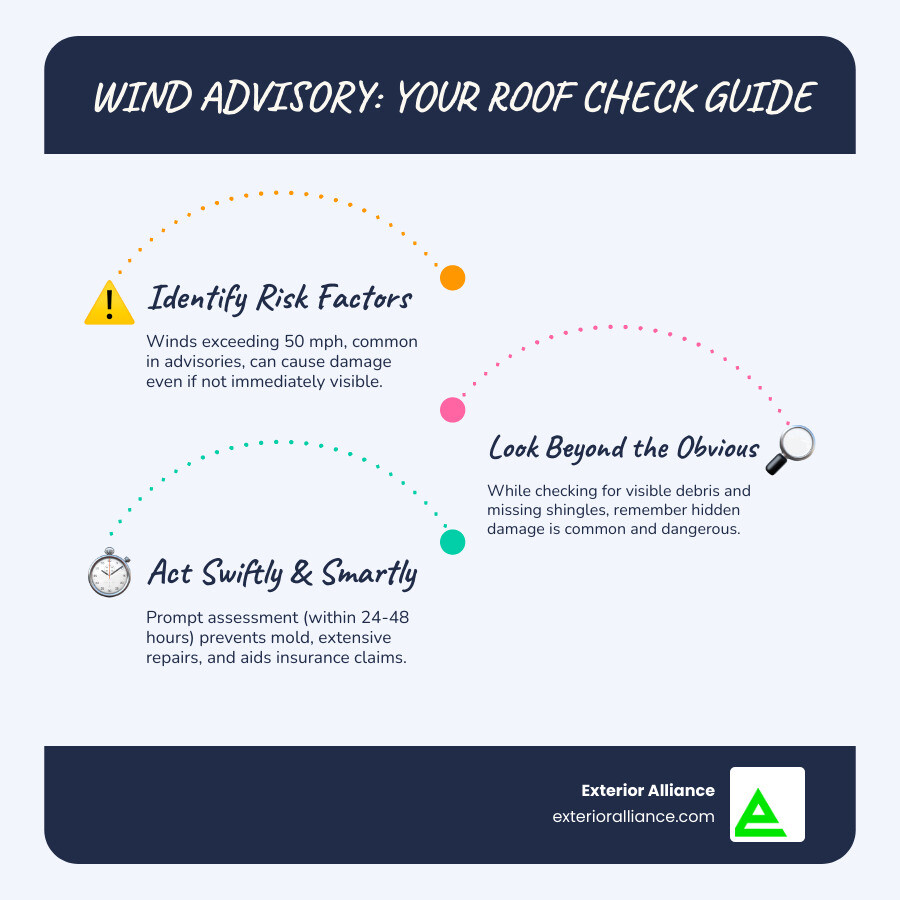
Do You Need a Roof Inspection After a Wind Advisory? 3 Steps to Check
After a wind advisory sweeps through Central Ohio, it’s crucial to check for hidden roof damage. Do You Need a Roof Inspection After a Wind Advisory? Absolutely. Even if things look fine, wind can cause small issues that grow into expensive problems. This three-step guide will help you safely assess your roof’s condition and know when to call in the professionals.
Step 1: Ground-Level Assessment (What to Look For)
Start with a safe, ground-level inspection. Your safety is the priority, so stay off the ladder. Walk around your property and look for these warning signs:
- Debris in the yard: Look for tree limbs, but pay special attention to roofing materials like shingle fragments or granules.
- Damaged gutters and downspouts: Check for dents, dings, or sections pulling away from the fascia. Improperly functioning gutters can cause water damage elsewhere.
- Damaged siding and fascia: Inspect siding for cracks, punctures, or loose panels. Damage here suggests your roof likely faced similar forces.
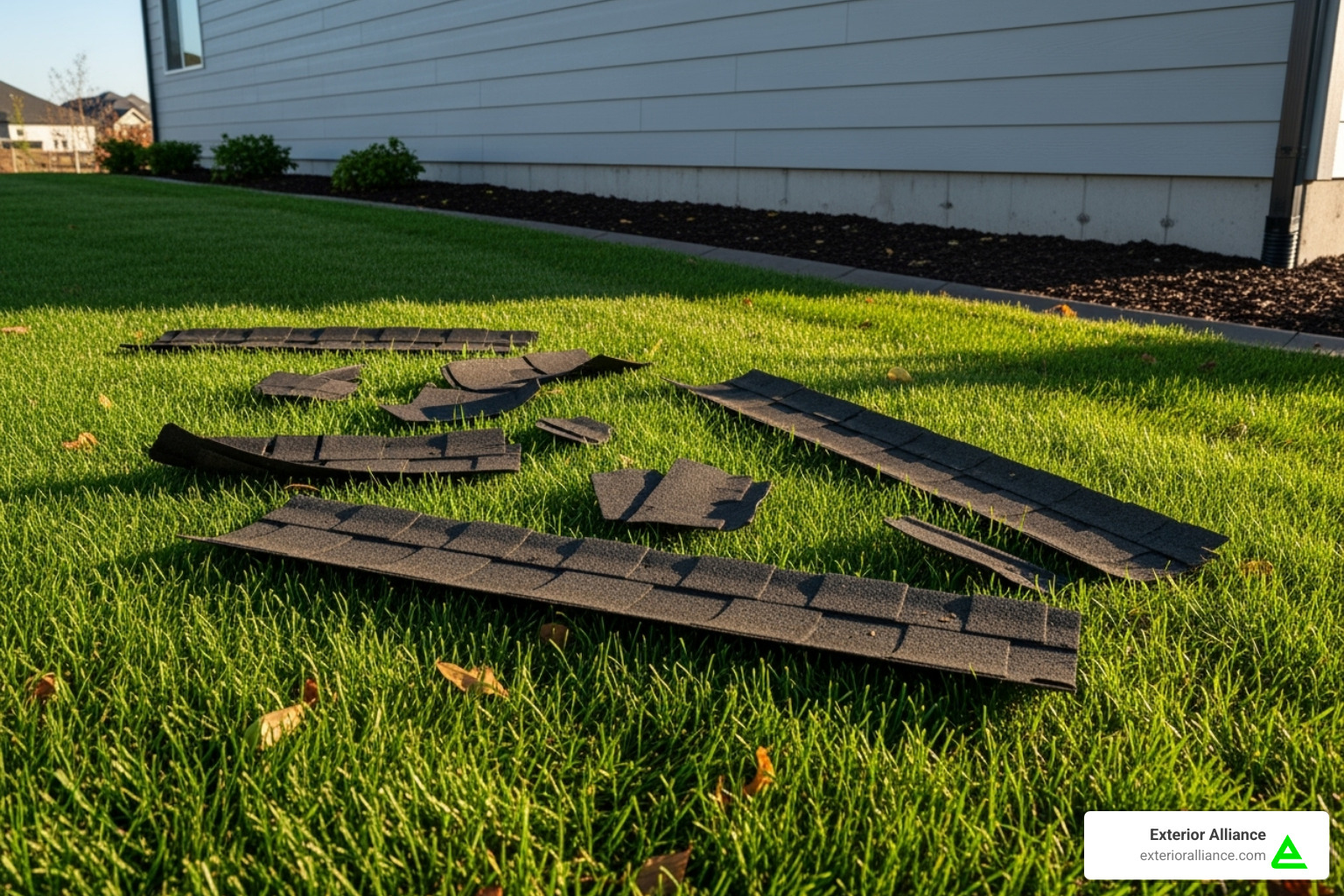
If you notice significant issues with your gutters or siding, our team can help with gutter installation dublin trusted roofing contractors or siding repair in columbus oh. Even if this initial check reveals no problems, don’t stop here.
Step 2: Close-Up Exterior Inspection (Safely Check Key Areas)
For a closer look, use a pair of binoculars to safely inspect your roof from the ground. This simple tool helps you spot details you can’t see otherwise. Systematically scan your roof for:
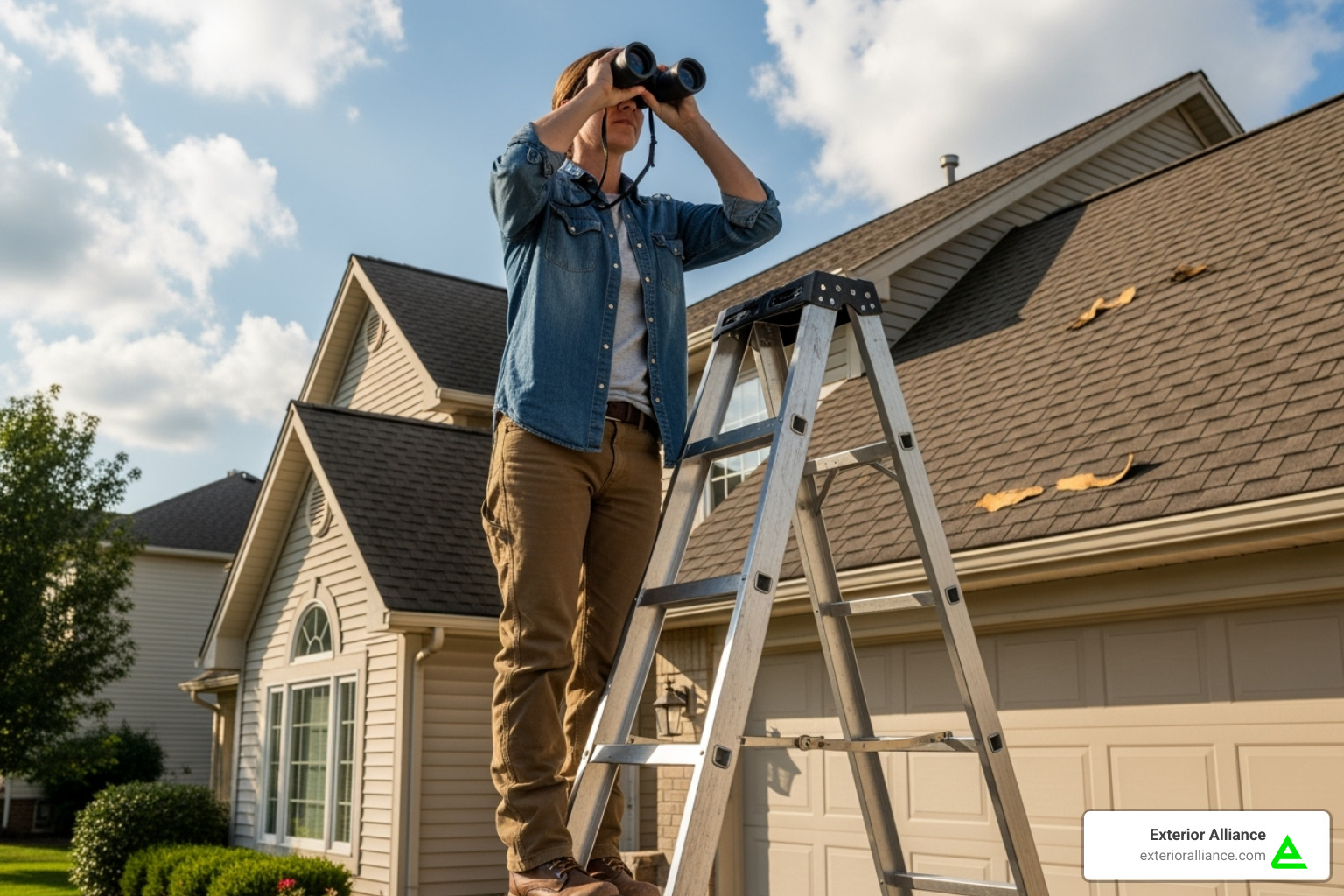
- Lifted or curled shingles: Wind can get under shingles and lift the edges, creating entry points for water.
- Creased or cracked shingles: Strong winds can bend shingles, leaving crease marks that indicate weak spots.
- Excessive granule loss: A sudden accumulation of black, sand-like granules in your gutters signals that your shingles are losing their protective layer against UV damage.
- Damaged flashing: Check the thin metal strips around chimneys, vents, and skylights. If it’s cracked or loose, it’s a prime spot for leaks. We offer professional skylights services if you find damage.
What appears minor from a distance could be the start of a much larger problem.
Step 3: Interior Check (Finding Hidden Leaks)
The most serious roof damage is often hidden inside your home. Water can travel from a small leak before becoming visible. If you can safely access your attic, use a flashlight and look for these signs:
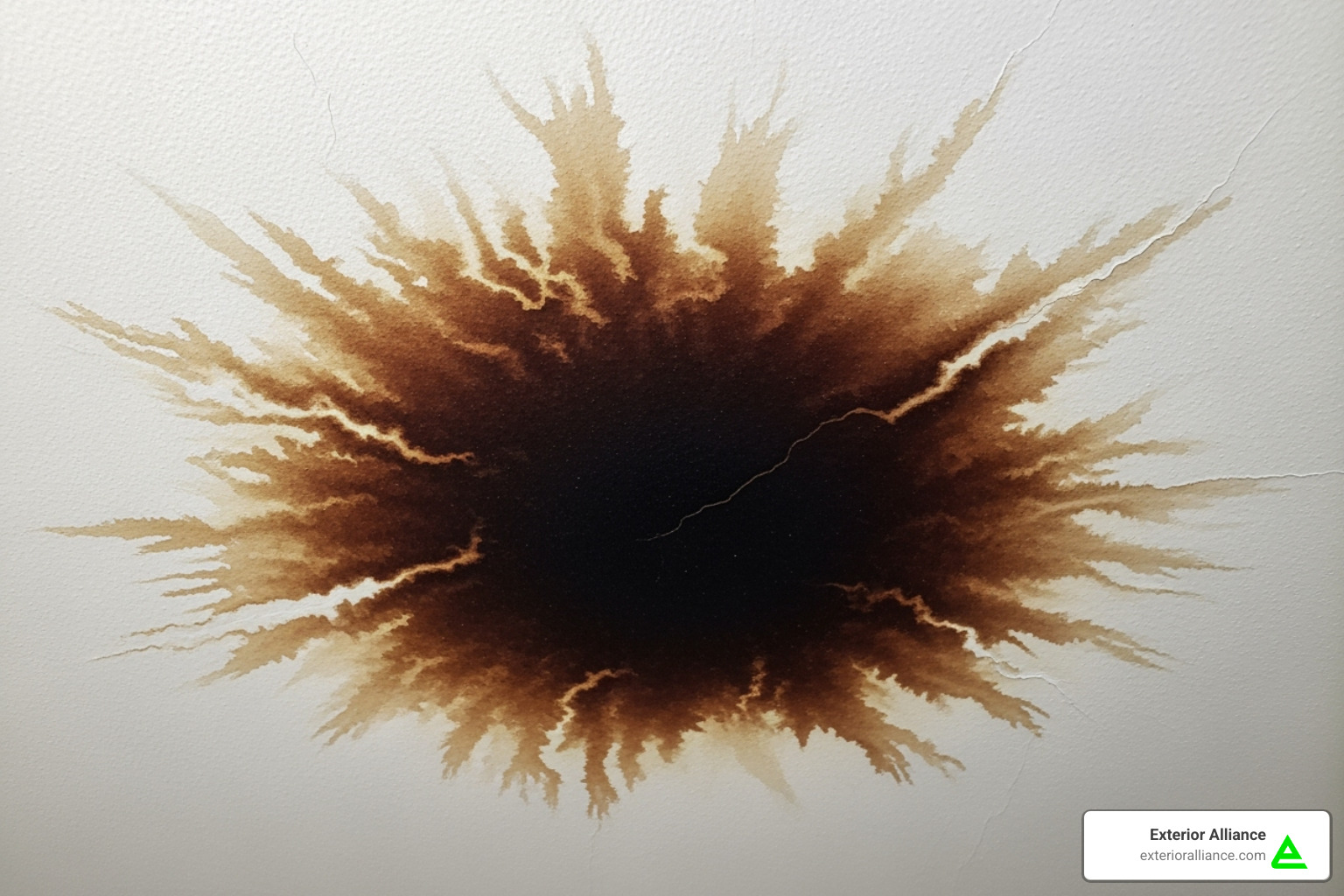
- Water stains: Look for dark patches or discolored rings on ceilings and walls.
- Damp insulation: Wet or matted-down insulation indicates a leak and creates a breeding ground for mold.
- Musty odors: A damp, earthy smell is an early warning sign of hidden moisture.
- Light beams or mold: Any light shining through the roof deck is a clear problem. Also, check for mold growth (black, green, or white patches), which can start within 24 to 48 hours of moisture exposure and poses a health risk.
If your interior inspection reveals any of these warning signs, it’s time to call a professional. Water damage only gets worse—and more expensive—with time.
Why a Professional Inspection is Crucial After Finding Damage
After your three-step assessment, you might have found concerning signs, or perhaps everything looked fine. Regardless, Do You Need a Roof Inspection After a Wind Advisory? The answer is still yes. Your DIY inspection is a valuable first step, but it can’t replace the trained eye of a professional roofing contractor. Your roof deserves expert attention after being stressed by high winds.
The Hidden Dangers of Unseen Wind Damage
Wind damage often starts small and unseen, but it can quickly escalate into a costly nightmare. A slightly lifted shingle becomes an open invitation for water, and a small crack in flashing can allow moisture to reach your home’s wooden structure. These seemingly minor issues can snowball if left unchecked, leading to:
- Water Infiltration: Water soaking into your roof deck and rafters can cause wood rot, compromising your home’s structural integrity.
- Health Hazards: Mold and mildew can begin forming within 24 to 48 hours of moisture exposure, seriously impacting your indoor air quality and triggering health issues.
- Higher Costs: Wet insulation is ineffective, driving up your energy bills. Furthermore, delaying repairs on storm damage may void your roof’s warranty.
Ignoring potential wind damage is a gamble with your home’s health and your finances. For comprehensive protection, consider our specialized wind damage roofing services.
How Wind Affects Different Roofing Materials
Different roofing materials have unique vulnerabilities to wind. An expert can spot signs of distress that an untrained eye might miss.
- Asphalt Shingles: The most common material in Columbus, asphalt shingles can suffer from lifting, curling, creasing, and granule loss, which accelerates deterioration.
- Metal Roofs: While durable, metal panels can experience uplift, loosened fasteners, or denting from flying debris, which can compromise the protective coating and lead to rust. Learn more about our metal roofing options.
- Slate and Tile Roofs: These heavy, brittle materials can crack or dislodge in high winds, exposing the underlayment to the elements.
- Wood Shakes and Shingles: Wind can cause wood to split, crack, curl, or blow away entirely.
- Flashing: Universally vulnerable, the flashing around vents, chimneys, and skylights can shift or crack, creating an easy path for water to enter.
Navigating Insurance Claims: Why You Need a Roof Inspection After a Wind Advisory
A professional inspection is vital for navigating the insurance claims process and protecting you from major out-of-pocket costs. Here’s why:
- Time is Critical: Most insurance policies have strict reporting deadlines, often 30 to 60 days after a storm. Waiting too long can lead to a denied claim.
- Professional Documentation is Key: Insurance adjusters require concrete evidence. Our team provides a comprehensive assessment with detailed photos and notes of all wind-related damage—both obvious and hidden. This thorough documentation is essential for a successful claim.
- Avoid the “Neglect” Trap: Promptly reporting damage prevents insurers from arguing that the problem worsened due to neglect, which could reduce your payout or result in a denial.
- Beware of Storm Chasers: After a storm, be wary of out-of-town contractors who use high-pressure tactics and often perform shoddy work before disappearing. As a local Dublin company with deep community roots and a BBB A+ rating, Exterior Alliance is a trusted partner you can rely on.
Angie’s List recommends contacting your insurance company as soon as you suspect damage. A professional report from Exterior Alliance provides the proof you need for a successful claim. Don’t leave your financial security to chance—get a free roof estimate and ensure you’re fully protected.
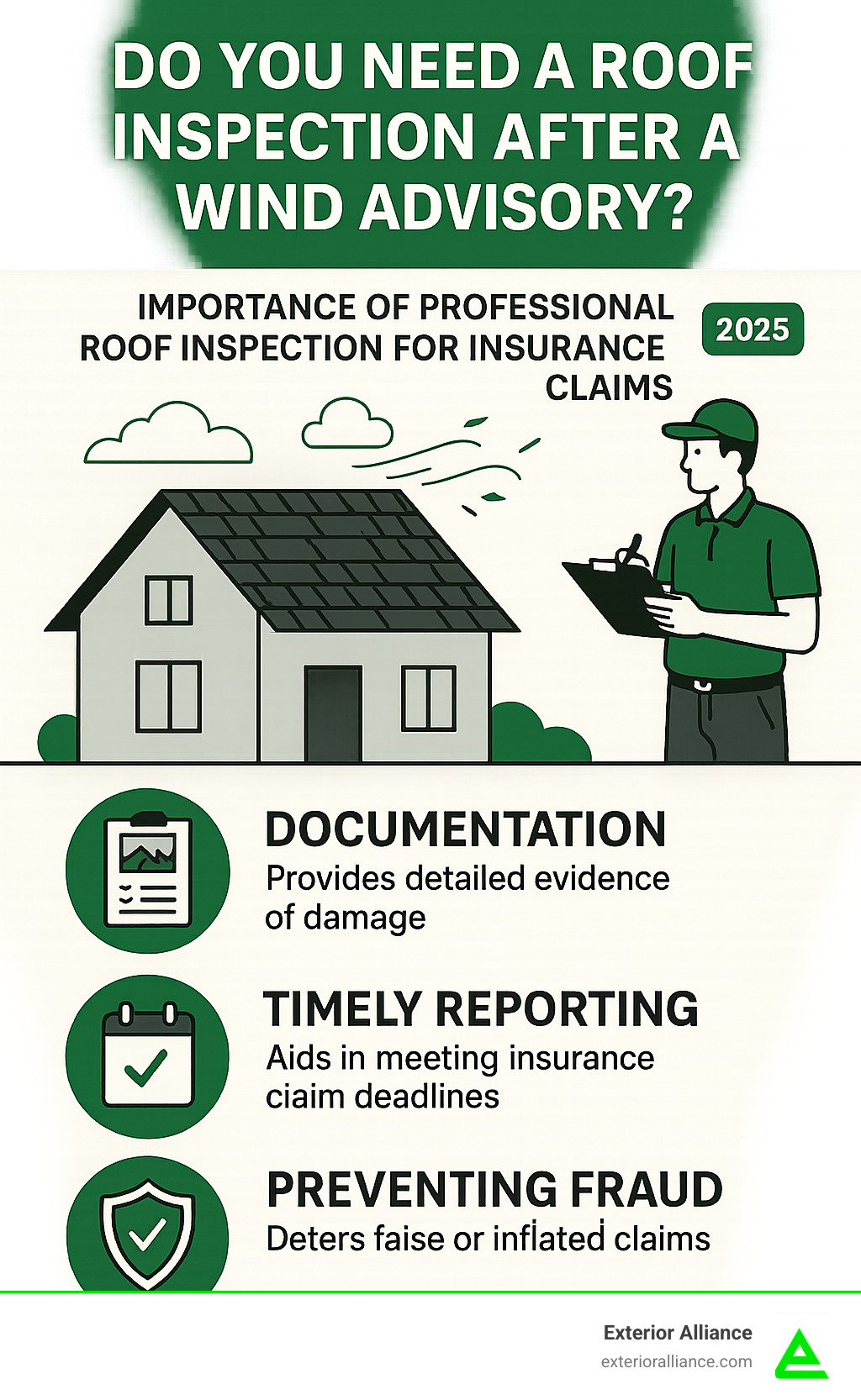
Don’t Wait: Protect Your Home Today!
This guide helps you perform an initial check, but a homeowner inspection has its limits. If you have any doubt after a wind advisory hits Central Ohio, the answer to Do You Need a Roof Inspection After a Wind Advisory? is always yes.
Roofs older than 20 years are particularly vulnerable to wind damage, as age naturally weakens materials. What might be a minor issue on a new roof could be a major problem for an older one.
The stakes are too high to take chances. Ignoring potential wind damage can lead to a cascade of expensive problems: water leaks, dangerous mold growth, and structural issues. Conversely, addressing damage promptly saves money, preserves your home’s integrity, and provides invaluable peace of mind.
As your trusted local roofing professionals serving Columbus, Dublin, Powell, Hilliard, Lewis Center, Westerville, Upper Arlington, Groveport, Plain City, Huber Ridge, Grandview Heights, Pickerington, Bexley, New Albany, Delaware, and the greater Central Ohio area, we’ve seen how minor wind damage can lead to major costs.
Our experienced, trained, and insured team will identify issues you might have missed, document everything for your insurance claim, and provide a clear, honest assessment. Don’t let a wind advisory turn into a roofing nightmare. Professional verification is the smart choice.
Contact Exterior Alliance today to schedule your comprehensive wind damage assessment. With our BBB A+ rating and commitment to excellence, you can trust us to give you the straight truth about your roof’s condition and the security that comes with it.

